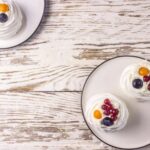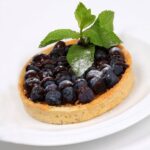When it comes to decorating a cake, one of the most important elements to consider is the icing. The right icing can take a plain cake from ordinary to extraordinary, transforming it into a visually stunning and delectable masterpiece. Whether you’re a seasoned baker or just starting out, understanding how to decorate a cake with icing is an essential skill that can elevate your baking game.
Icing serves as not only a delicious topping but also as a canvas for creativity. With the right techniques and tools, you can create beautiful designs, intricate patterns, and even three-dimensional decorations on your cakes. From smooth finishes to whimsical borders, icing opens up endless possibilities for customization and personalization.
In this article, we will explore the art of cake decoration through the lens of icing. We will delve into different types of icing, such as buttercream, fondant, royal icing, and ganache, providing you with a comprehensive guide on their characteristics and uses. Additionally, we will discuss essential tools and ingredients needed for successful cake icing and share expert tips on preparing your cake for the icing process.
Join us as we embark on an exciting journey through the world of cake decoration with icing. Whether you’re looking to create simple yet elegant designs or challenge yourself with more advanced techniques, this article will equip you with the knowledge and inspiration to achieve professional-looking results. So grab your apron and get ready to unleash your creativity – let’s dive into the world of decorating cakes with icing.
Understanding the different types of icing
Understanding the different types of icing is essential in becoming a skilled cake decorator. Each type of icing has its own unique properties and uses, allowing decorators to achieve different effects and textures on their cakes. In this section, we will provide a comprehensive guide to four popular types of icing: buttercream, fondant, royal icing, and ganache.
Firstly, let’s explore buttercream icing. This creamy and smooth icing is made from a mixture of butter or shortening, powdered sugar, and flavorings. It is versatile and easy to work with, making it a popular choice for both beginner and experienced decorators. Buttercream can be used for piping borders, creating rosettes and flowers, or for covering an entire cake. Its soft texture allows for easy spreading and blending of colors.
Next up is fondant, which is made from sugar syrup that is cooked to the soft ball stage before being rolled out into sheets. Fondant provides a smooth and flawless finish to cakes while also allowing decorators to create intricate designs such as figures or bows. It can be rolled out thinly to cover cakes or molded into various shapes for decorations. Fondant comes in different colors and flavors but can also be easily dyed with food coloring.
Royal icing is another commonly used type of icing in cake decorating. Made from egg whites or meringue powder mixed with powdered sugar, it dries hard and smooth once set. Royal icing is ideal for creating intricate designs like lacework, filigree patterns, or delicate flowers on cakes. It can also be used to create decorative borders or piped lettering onto cakes.
Lastly, ganache is a rich chocolate mixture made from chocolate and heavy cream. It can be poured over a cake for a glossy finish or whipped until light and fluffy consistency for filling layers between cakes. Ganache creates a decadent taste while providing a smooth surface that can be decorated further with other icings or toppings.
Understanding the different types of icing is a crucial step in cake decorating as it enables decorators to choose the right icing for the desired effect. Each type offers its unique properties and uses. Whether it’s the smoothness of fondant, the versatility of buttercream, the delicate details of royal icing, or the richness of ganache, mastering these icings will bring your cake decorating skills to new heights.
Essential tools and ingredients for cake icing
Decorating a cake with icing requires the right tools and ingredients to achieve professional-looking results. Whether you are a beginner or an experienced baker, having the essential equipment and supplies is crucial for successful cake decoration. Here is an overview of the must-have tools and ingredients for cake icing:
Tools
- Offset spatula: This angled spatula is perfect for spreading and smoothing icing on cakes.
- Piping bags: These disposable or reusable bags are used for piping decorative designs and borders onto cakes.
- Piping tips: There are various types of tips available, such as round, star, leaf, and petal tips, each creating different patterns and designs.
- Turntable: A turntable makes it easier to rotate the cake while decorating, allowing for even application of icing.
- Bench scraper: This tool helps achieve sharp edges and smooth finishes on the sides of the cake.
- Cake leveler: Used to trim off any uneven layers of cake before icing.
- Decorating comb: This tool creates textured finishes on buttercream or ganache-covered cakes.
Ingredients
- Buttercream or royal icing: Buttercream is a classic frosting made from butter, powdered sugar, and flavorings like vanilla extract. Royal icing is commonly used for intricate designs and decorations, made from egg whites and powdered sugar.
- Fondant: A pliable dough-like icing that can be rolled out and draped over cakes for a smooth finish.
- Ganache: Made from chocolate and heavy cream, ganache can be used as a filling or poured over cakes for a shiny glaze.
- Food coloring: Gel or liquid food coloring allows you to create vibrant colors for your icing.
Supplies
In addition to tools and ingredients, there are other supplies that will come in handy during the cake decoration process:
- Cake boards or stands: These provide a sturdy base for your cake while decorating and serving.
- Palette knife: Used for mixing colors into icing, lifting decorations, or spreading fillings.
- Edible decorations: These include edible glitter, pearls, flowers, and sprinkles to add an extra touch of creativity to your cake.
Having these essential tools and ingredients will set you up for success in creating beautifully decorated cakes. Remember to also have a clean and organized workspace to make the process more enjoyable. Experiment with different techniques and let your creativity shine through as you decorate your cake with icing.
Preparing your cake for icing
Leveling your cake
One of the first steps in preparing your cake for icing is to ensure that it has a level surface. This will help create a sturdy base for the icing and prevent any lopsidedness or unevenness in the final presentation. To level your cake, you will need a long serrated knife or a cake leveler.
Start by placing your cake on a flat surface and gently cut off the domed top using even strokes. Be sure to keep the knife parallel to the surface of the cake for an even cut. If you are working with multiple layers, repeat this step for each layer.
Crumb coating
After leveling your cake, it is important to apply a crumb coat before you start icing. A crumb coat is a thin layer of icing that helps seal in any loose crumbs and provides a smooth foundation for the final layer of frosting. To crumb coat your cake, spoon a generous amount of icing onto the center of your leveled cake layer.
Use an offset spatula to spread the icing evenly across the top and sides of the cake, making sure to fill any gaps or imperfections. The layer should be thin enough that you can see some parts of the cake through it. Once you have finished applying the crumb coat, chill the cake in the refrigerator for about 15 minutes to allow it to set.
Preparing for icing
Before you proceed with adding your final layer of icing, there are a few additional steps you can take to ensure that your cake is ready for decorating:
- Stabilize your cake: To prevent it from sliding or shifting while you work, place small dollops of icing on a serving plate or turntable and gently press down so that they stick.
- Apply an additional layer of frosting: After chilling the crumb-coated cake, you can apply a thin layer of fresh icing to ensure the surface is smooth and ready for decoration. This additional layer will serve as a base for your final icing design.
- Plan your design: Take some time to visualize how you want your cake to look and plan out any specific designs or patterns you want to create. This will help guide your icing process and ensure a cohesive and visually appealing end result.
By following these expert tips on leveling, crumb coating, and preparing your cake for icing, you will be well on your way to achieving a professional-looking finish for your cake decoration project.
Mastering basic icing techniques
Mastering basic icing techniques is essential for anyone looking to create a visually appealing cake. Whether you’re a beginner or an experienced baker, these step-by-step instructions will help you achieve professional-looking results. In this section, we will explore how to create smooth finishes, decorative borders, and whimsical patterns using different types of icing.
Smooth Finishes
- Start by applying a thin layer of icing, known as a crumb coat, to the entire cake.
- Use an offset spatula to spread the icing evenly over the surface of the cake.
- To achieve a smooth finish, hold the spatula at a slight angle and apply gentle pressure as you glide it over the icing.
- Rotate the cake as you work to ensure even coverage on all sides.
Decorative Borders
- Select your desired border design and choose a piping tip that corresponds to that design.
- Fill a piping bag fitted with the chosen tip with icing and twist the top closed.
- Squeeze the bag gently with steady pressure to pipe the border onto your cake.
- Maintain consistent pressure as you pipe around the edges of your cake in one continuous motion. This will ensure an even border.
Whimsical Patterns
- Create whimsical patterns by using various piping tips, such as star or petal tips.
- For a star pattern, hold your piping bag fitted with a star tip at a 90-degree angle above the cake’s surface.
- Gently squeeze the bag while applying steady pressure and lift it away from the surface once you’ve created a star shape.
By following these step-by-step instructions, you’ll be able to create smooth finishes, decorative borders, and whimsical patterns that will enhance the visual appeal of your cake. Practice is key when it comes to mastering these techniques, so don’t be discouraged if it takes a few tries to get the desired results. With time and patience, you’ll become more confident in your icing skills and be able to create stunning cakes for any occasion.
Taking it up a notch
Creating intricate designs, floral decorations, and themed cakes requires a mastery of advanced icing techniques. These techniques allow decorators to take their cake decorating skills to the next level and create truly stunning and unique creations. Whether you are a professional baker looking to expand your repertoire or a home baker wanting to impress friends and family, learning these advanced techniques will elevate your cake decorating game.
Intricate Designs
One way to take your cake decoration skills up a notch is by mastering intricate piping designs. Using a piping bag fitted with different tips, you can create elaborate patterns, lace-like designs, or even personalized messages on your cakes. Experimenting with different piping tips and practicing with various consistency of icing will help you achieve precision and control in your designs. Patterns such as rosettes, basketweave, or lattice work can add sophistication and elegance to any cake.
Floral Decorations
Flowers are a classic choice for cake decorations, adding beauty and delicacy to any design. Advanced icing techniques allow you to create realistic-looking flowers using buttercream or royal icing. With the right tools and practice, you can pipe roses, daisies, lilies, or any other flower of your choice onto your cakes. Adding edible dust or gel colors can also enhance the visual appeal of these floral decorations by giving them depth and dimension.
Themed Cakes
Themed cakes are always a hit at parties or special events because they bring a sense of fun and excitement. Advanced icing techniques make it possible to transform a simple cake into an impressive representation of almost anything – from characters from movies or cartoons to realistic replicas of objects or scenes. By using sculpted fondant decorations, airbrushing techniques, edible paint, or intricate hand-painted details, you can turn an ordinary cake into an extraordinary masterpiece that will leave everyone amazed.
As with any new skill, it is important to practice these advanced icing techniques and start with simpler designs before attempting more complex ones. Be patient with yourself, as it may take time to perfect these skills. Remember that every cake decorator started as a beginner, and with dedication and practice, you will be able to create intricate designs, floral decorations, and themed cakes that will impress everyone who sees them.
Layering flavors and textures
Layering flavors and textures is an important aspect of cake decoration that can enhance both the taste and visual appeal of your creation. By incorporating flavored icings, fillings, and textured finishes, you can create a cake that is not only visually stunning but also deliciously memorable.
When it comes to layering flavors, one popular option is to use different flavored icings on each layer of your cake. For example, you could have a chocolate buttercream icing on one layer, a vanilla cream cheese icing on another layer, and a raspberry Swiss meringue buttercream on yet another layer. This not only adds variety to your cake but also creates interesting flavor combinations that will delight your taste buds.
Another way to add layers of flavor is by using fillings between the cake layers. Fillings like fruit preserves, caramel sauce, or ganache can add a burst of flavor and moisture to each bite. Consider pairing complementary flavors with the different icings you choose to create a harmonious combination of tastes.
In addition to layering flavors, incorporating textured finishes can elevate the overall visual appeal of your cake. Textured finishes such as ruffles, rosettes, or basketweave patterns can add depth and dimension to your design. You can achieve these finishes by using various piping tips or specialized tools. Experiment with different textures to find ones that complement the theme or style of your cake.
By incorporating flavored icings, fillings, and textured finishes into your cake decoration process, you can create a show-stopping dessert that not only looks beautiful but also tantalizes the taste buds of those who indulge in it. Take the time to explore different flavor combinations and experiment with various decorating techniques to truly make your cake a masterpiece.
Troubleshooting common icing issues
Decorating a cake with icing can be a fun and rewarding experience, but it’s not without its challenges. From frosting mishaps to air bubbles and melting, there are several common issues that can arise during the icing process. However, with a little knowledge and some helpful tips, you can easily navigate these challenges and achieve the perfect cake decoration.
One common issue that many people face when icing a cake is frosting mishaps. This can include uneven or lumpy frosting, streaks in the icing, or difficulty in achieving a smooth finish. To address these problems, it’s important to start with a good base. Make sure your cake is properly leveled and crumb coated before applying the final layer of icing. This will help create a smooth surface for your frosting.
If you find that your frosting is lumpy or streaky, try using a spatula or offset knife to smooth it out. You can also try thinning out your icing slightly with milk or water to achieve a smoother consistency. Additionally, if you’re struggling with achieving a perfectly smooth finish, consider investing in an icing smoother tool.
Another issue that commonly arises is the presence of air bubbles in the icing. Air bubbles can create small pockets on the surface of your cake and affect its overall appearance. To prevent air bubbles from forming, make sure to mix your icing thoroughly before applying it to the cake. If you notice air bubbles after applying the icing, gently tap the sides of the cake to release any trapped air.
Melting is another challenge that often occurs when working with certain types of icings such as buttercream or cream cheese frosting in warm climates or rooms. To prevent this issue, make sure your cake is completely cooled before applying any type of icing. You can also refrigerate your iced cake for a short period of time to help set the frosting and prevent melting.
By keeping these troubleshooting tips in mind, you’ll be able to address common icing issues and create a visually stunning cake decoration. Don’t get discouraged if you encounter challenges along the way – practice makes perfect, and with time and experience, you’ll become an expert at decorating cakes with icing.
Beyond the icing
When it comes to cake decoration, the icing is just the beginning. Once you’ve perfected your icing techniques and created a beautifully finished cake, it’s time to take it to the next level with some final touches. Adding edible decorations, sprinkles, and personalized messages can enhance the overall look of your cake and make it even more special for any occasion.
One way to add an extra touch of elegance to your cake is by using edible decorations. These can include flowers made from gum paste or fondant, edible pearls or gems, or even delicate lace designs created with edible lace. Edible decorations not only add visual appeal but also provide an opportunity to incorporate the theme or color scheme of your event.
If you’re looking for a quick and easy way to add some fun and color to your cake, sprinkles are a great option. There are so many different types of sprinkles available: colorful jimmies, sparkling sugar crystals, metallic dragees, confetti shapes, and more. Simply sprinkle them over your frosted cake or use them strategically to create patterns and designs.
Personalized messages on cakes are a popular choice for birthdays, anniversaries, graduations, and other special occasions. You can use letter cutters or stencils to create perfect fondant letters that spell out names or heartfelt messages. Alternatively, you can pipe personalized messages using tinted royal icing or buttercream in a piping bag fitted with a small round tip.
Adding these final touches not only makes your cake visually appealing but also adds a personal touch that will be appreciated by those enjoying your creation. Whether you choose elegant edible decorations, colorful sprinkles, or personalized messages, these finishing touches elevate your cake from ordinary to extraordinary.
| Final Touch | Description |
|---|---|
| Edible Decorations | Flowers, pearls, lace |
| Sprinkles | Jimmies, sugar crystals, dragees |
| Personalized Messages | Fondant letters or piped icing |
Conclusion
Decorating a cake with icing is not only a visually appealing art form but also a rewarding and satisfying experience. Throughout this article, we have explored the different types of icing, essential tools and ingredients, as well as mastering basic and advanced techniques. We have also discussed how to troubleshoot common issues and add final touches to create a cake masterpiece.
By understanding the different types of icing, such as buttercream, fondant, royal icing, and ganache, you can choose the one that best suits your taste preferences and design ideas. Armed with the right tools and ingredients, you can achieve professional-looking results that will impress your family and friends.
Mastering basic icing techniques is crucial as it forms the foundation for creating smooth finishes, decorative borders, and whimsical patterns. As you gain confidence in your skills, you can take it up a notch by exploring advanced techniques to create intricate designs, floral decorations, and themed cakes. Layering flavors and textures can further enhance the taste and visual appeal of your cake.
Of course, no decorating journey is without its challenges. However, armed with knowledge on troubleshooting common issues like frosting mishaps or air bubbles, you can overcome these obstacles with ease. And lastly, don’t forget to add those final touches with edible decorations and personalized messages to truly make your cake masterpiece unique.
In conclusion, successfully decorating a cake with icing brings not only satisfaction but also joy. The ability to create something beautiful from scratch is truly worth celebrating. So put on your apron, gather your supplies, and let your creativity soar as you embark on this delightful journey of decorating cakes with icing.

Welcome to my blog about home and family. This blog is a place where I will share my thoughts, ideas, and experiences related to these important topics. I am a stay-at-home mom with two young children. I hope you enjoy reading it! and may find some helpful tips and ideas that will make your home and family life even better!





